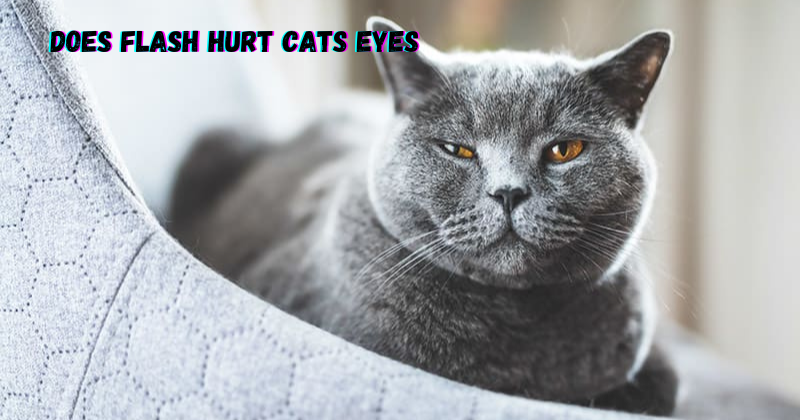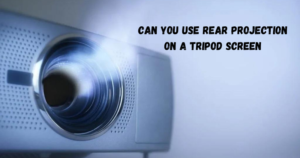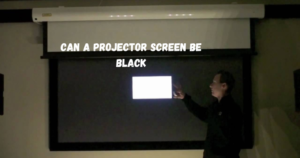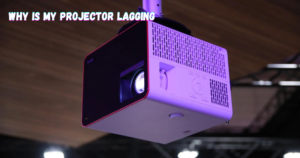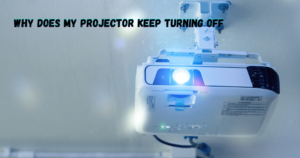Cats have the amazing superpower of seeing in the dark, so their highly sensitive eyes and superior night vision beg the question: Does exposure to bright LED flashlights or camera flashes hurt cats’ eyes? As a pet parent, you naturally want to keep your furry friend safe, secure, and healthy.
Unfortunately, though, there’s not much information out there regarding this topic- that is why we are here to help! We will look into what kinds of light can actually cause damage to cats’ eyes, how long exposure should be avoided for safety purposes, and whether shielding techniques exist that could minimize any potential harm.
By understanding these issues surrounding flash photography pets such as cats, you can make sure your beloved companion remains happy and healthy during special moments like photo shoots. We’ll explain how to protect your cat’s eyes and why lights have such a huge impact on them.
The Structure of the Cat Eye’s Retina
The retina of all mammal’s eyes, including cats, is made up of rods and cones. Cones are responsible for color vision, while rods are responsible for seeing in dim light conditions. Cats have a high concentration of both rods and cones compared to humans, which makes their vision much sharper than ours.
Light energy is converted into signals that are sent to the brain via the optic nerve in the retina, which is a light-sensitive layer at the back of the eye. Cats have poor peripheral vision, but their binocular vision is wide at ~200 degrees. This means they can see all around them. So, with such amazing eyesight, how do we protect our kitty from getting hurt by bright light?
The retina is responsible for capturing and directing light to the brain, where it is then converted into an electrical signal that allows cats to see. It works by detecting different wavelengths of light, which are processed through the rods and cones and sent to the brain.
What Does Specialist Research Say
According to research by animal eye specialists, short exposure to bright flashes of light does not cause any significant damage to the eyes of cats. In fact, it is estimated that it would take approximately 100 times more light intensity for a camera flash or LED flashlight to harm a cat’s retina.
However, longer exposure to bright lights can be harmful and potentially lead to temporary or permanent retinal damage. There is a significant lack of scientific research into the effects of artificial light on animals. This is especially true for older cats or those with pre-existing eye conditions, as their eyes may be more vulnerable.
Is Flash Hurt Cats Eyes
As mentioned earlier, cats have highly sensitive eyes and a greater number of rods and cones than humans. This makes them more sensitive to bright lights, including LED flashlights or camera flashes. However, the good news is that the duration of most flashes is so short that it typically does not harm your cat’s eyes.
The American Veterinary Medical Association has found no evidence to suggest that flash photography can cause harm to cats’ eyes. However, it is important to note that prolonged exposure to bright lights may cause temporary discomfort or disorientation for cats, just like it would for humans. In such cases, they may avoid the light or look away until their eyes adjust.
Tips for Better Flash Photography On Your Cats
If you are planning to take photos of your cats with flash and want to know cats eyes sensitive, here are a few tips to keep in mind:
Keep Cat 4 feet Away From The Flash
When using a flash, make sure to keep your cat at least four feet away from the source. This is especially important for kittens or cats with lighter fur colors, as their eyes may be more sensitive.
As a general rule, if the light is too bright for your own eyes, it’s likely too bright for your cat’s eyes as well. Night photography can be tricky, but it’s best to err on the side of caution when it comes to your cat’s vision.
Use Flash Reflectors/Triggers
When choosing a flash or flash trigger, make sure to select one that is cat-friendly. Some reflective materials used in photography equipment (e.g., aluminum) can be potentially harmful if directed toward your cat’s eyes.
Instead, opt for non-reflective materials like plastic or fabric. Additionally, it’s always a good idea to test out the flash first before using it on your cat.
Use Red-Eye Reduction
Most modern cameras come with red-eye reduction features that help reduce the intensity of flashes. This can be helpful when taking photos of cats, as their eyes are more reflective compared to humans. If you don’t have this feature, try dimming the flash in your camera settings or using an external flash diffuser to soften the light.
Cats are generally nocturnal animals, so bright lights and sudden flashes may startle them. This is why it’s important to minimize any potential discomfort or harm to their eyes during photography sessions.
By following these tips, you can ensure that your cat remains safe while capturing beautiful moments together. So feel free to snap those precious photos of your feline friend, knowing that the flash won’t hurt their delicate
Flash Photography with Animals
Flash photography can be uncomfortable for all animals, not just cats. So, if you have other pets like dogs or rabbits that you want to photograph with flash, it’s important to keep in mind the same tips as mentioned above.
While we have focused on cats in this article, it’s also worth mentioning that other animals may also be sensitive to bright lights and flashes. Cats hate bright lights even if suddenly flash they scared as well.
This includes dogs, rabbits, and other nocturnal pets. It’s always best to take extra precautions when using flash photography around your pets and make sure their safety is a top priority. During photography remember 1 64th of the light output is recommended as a safe level.
Additionally, wild animals such as deer and owls also possess highly sensitive eyes due to their nocturnal habits. Therefore, it’s best to avoid using flash photography when capturing pictures of cats other animals in the wild. Instead, opt for natural lighting or use a flash diffuser if necessary.
FAQs
Are colored lights save for cats?
Colored lights are generally safe for cats as they don’t emit bright flashes of light. However, it’s still important to avoid directing these lights directly towards your cat’s eyes for extended periods of time. Cats are sensitive to all bright lights, regardless of the color. LED flashlights and camera flashes can cause discomfort or disorientation for cats due to their highly sensitive eyes.
Do flashing lights scare cats?
Yes, flashing lights can startle cats and may cause them to become disoriented. It’s important to keep your cat at a safe distance from bright lights or use red-eye reduction features to minimize any discomfort.
What colors can cats see?
Cats primarily see in shades of blue light and green light, as they only have two types of cones in their eyes, compared to humans, who have three. This means that cats cannot distinguish between red, orange, or yellow colors very well. However, they do have excellent night vision due to their high number of rods in the retina.
Is UV light safe for cats?
UV light is generally not harmful to cats’ eyes, but it’s best to avoid exposing them to direct sunlight for extended periods. This is especially true for white or light-colored cats, as they may be more susceptible to sun damage.
Do LED Strip Lights Hurt Cats Eyes?
Similar to flashlights and camera flashes, LED strip lights should not harm your cat’s eyes if used briefly. However, it’s important to ensure that the light is not too bright or intense for their sensitive eyes. You can do this by keeping your cat at a safe distance from the source of light or using red-eye reduction features if available
Conclusion
In conclusion, it would appear that although on-camera flash may temporary blindness or disorient cats, it should not cause any lasting damage to their eyes.
However, blue and green-eyed cats are more sensitive to light of flash than other colors, so if you do choose to photograph your cat using flash, take extra care when doing so.
Though some cats may be tolerant of bright flash while others can’t stand it at all, it’s still best to err on the side of caution and avoid the use of flash entirely if possible.
Furthermore, when trying to get good pictures of your cat without resorting to the use of a flash, try using natural light and taking advantage of times when your pet is calm and content in order to get better results. Above all, treat your furry feline friend with kindness and care; they’re our family, after all.
